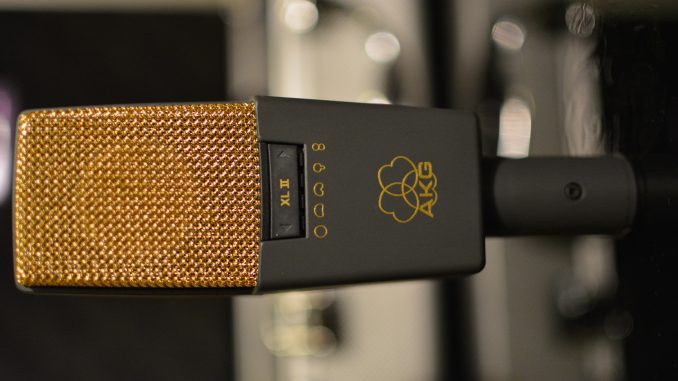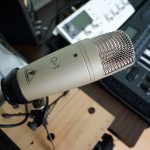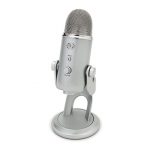
It is natural to compare microphones before you purchase them but in our showdown between the AKG C414 vs the AKG C214 it is perhaps even more relevant. The two microphones are pretty much in the same range, and some say they’re two different versions of the same thing. The C214 is cheaper and more modern than the C414, and both are good microphones in their own right, but there are some key differences as well as pros and cons to both, which we’re exploring in this review.
C414
The famous multipattern condenser microphone, the AKG C414. It’s ideal for vocals and for instruments, and can even be used as a drum overhead mic.
This mic has nine polar patterns, as well as three different bass filters to help reduce the proximity effect. It has high SPL, so can cope with louder sound sources.
C214
The C214 is made of slightly cheaper parts. It doesn’t have as many polar patterns, and only has one bass filter cutoff, but it is still a great mic. It is a budget pick, and costs less than half the price of the C414 in some places.
AKG The Brand
AKG has been a well-established music brand for many decades, and in fact, some of their most famous mics have been around since the early days of popular music. AKG is over 70 years old, and the C414 microphone has been around for almost all of that time (they launched them in the 1940s). AKG Acoustics has a range of products but is best known for producing headphones, earbuds, and of course microphones. Their long history of producing mics has seen them create some of the very best mics the world has ever seen, and they have been integral to many legendary recordings.
The Showdown
Sound and Features
Of course, the most vital aspect we’re judging these microphones on is their sound quality. Other things must be taken into account but without being able to accurately reproduce sound all the rest is academic.
The sound of an AKG C414 is famous the world around. They have been used for recording instruments and vocals for many years. There is a reason these microphones are the industry standard. They are found all over the world in recording studios because of their clean, crisp audio and extremely low impedance and noise. It sounds like a bold call, but there aren’t many microphones better in the whole world. The C414 has something else huge going for it; versatility. With an incredible nine different polar patterns, this microphone is effective in almost every use imaginable. The multiple decibel roll-off features mean that if you’re recording somewhere noisy you can even adjust the gain to ensure you filter out unwanted volume and noise.
The C214 is modeled on the 414 and is a modern, more affordable alternative. This does mean that in almost every area it is inferior to the C414. That said, its inferiority is not too drastic, and although it has a different capsule and diaphragm, it is still a very solid microphone. If the 414’s sound quality is a 10/10, I would consider the C214 around a 7.5/10. There is one area though where the 214 wins…
Price
Musical equipment is not cheap. The fact that the AKG C214 can be picked up for half of the price of its elite elder sibling means that it is a more realistic model for a lot of us. If you run an elite recording studio where money is no real object then, by all means, the 414 is probably going to win the fight, but if you’re on a budget, this isn’t the case.
Judged by the standards of other microphones at the same pricing point, you will be hard-pressed to find a microphone with the same clarity and versatility of the 214 for the same money. Its sound profile is modeled on the C414 XLII and just like its brother, it is suitable for guitars both acoustic and electric, pianos, drum overheads, vocals and more. In theory, you could record a whole album using just these mics.
Neither of these microphones is ‘cheap’ by anyone’s standards, but you can save a sizeable chunk if you opt for the C214, whilst still adding a microphone made by one of the industry’s leading brands.
Conclusion
And the winner is… The C414. There’s no way it isn’t the better of the two mics. That said, if you are lucky enough to be using either of these products for your recordings, you are on easy street. The difference between the two is the difference between a good mic and a great mic.
If you’ve been lucky enough to use these two microphones, we’d be delighted to hear your opinion below, leave us a comment or get in touch to tell us your two cents on this debate.





